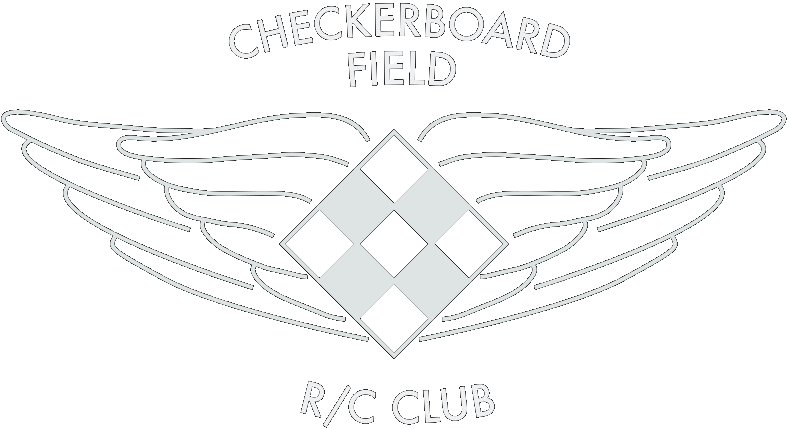June 6, 1926 to January 27, 2022
Hal was a designer, competitor, friend, father, grandfather and great-grandfather.
Founding member of Checkerboard RC Club in 1972
For as long as he can remember, Hal Parenti had been fascinated with the idea of flying. At the young age of six or seven, he purchased a 10-cent Comet Models kit and pestered his mother to help him build it. By the age of 10, he was able to build a Phantom Flash and fly it in front of his house on the streets of Chicago.
As his skills advanced, he moved up to the 25- and 50-cent models. He spent many days at the Comet factory staring at all the models hanging from the ceiling.
At age 13, Hal purchased his first gas engine, a GHQ kit costing $4.95. He never did get it to run, but eventually purchased a Marvin .19, which he put in a Goldberg Zipper Free Flight model. At age 17, he built a Comet Clipper, but soon after graduating from high school in 1944, he entered the military-in his case, the U.S. Army, as a sergeant in World War II. Modeling was put on hold for a few years. Hal remembers taking target practice against Radio Control drones while in the army, but says that no one was able to hit them.
After his discharge from the Army in 1946, Hal began building and flying Control Line models in addition to Free Flight. He flew Control Line Stunt for a while, then in the early 1950s switched to Control Line Speed. Around 1955, he acquired a single-channel Citizenship radio and moved permanently into Radio Control.
When reed systems were introduced, Hal began flying Radio Control Aerobatics using famous designs like the Smog Hog, Astro Hog, Orion, and Taurus. His quest for a better performing airplane inspired him to design his own aircraft. He created many versions of his Canoli pattern design, which he successfully used in competitions all throughout the 1960s and early 1970s. Hal also competed successfully in Radio Control Pylon, but in the 1970s, he discovered the form of competition that best fit his building and flying skills, Radio Control Scale.
Hal started designing and competing in Scale events at a national level in 1975, and won many awards at contests like the Nationals, Top Gun, Scale Masters, Toledo, and the Mint Julep Scale Meet. Hal was a National Champion 18 times. National Championship models designed and flown by Hal included:
• 1975 – Mitsubishi A6M2 Zero
• 1982 – Grumman F8F-2 Bearcat
• 1984 – Bell P-39D Airacobra
• 1986 – Savoia Marchetti SM79 Sparviero
• 1989 – Ryan FR-1 Fireball
• 1990 – Cessna 336 Skymaster
• 1993 – Piper PA-39 Twin Comanche (Canadian Nationals)
• 1996 – Ryan FR-1 Fireball
• 1997 – Cessna 336 Skymaster
• 1998 – North American B-25J Mitchell
• 2004 – Ryan FR-1 Fireball
• 2006 – Ryan FR-1 Fireball
• 2007 – Ryan FR-1 Fireball
• 2012 – Ryan FR-1 Fireball
• 2013 – Ryan FR-1 Fireball
• 2015 – North American T-28 Trojan
• 2016 – Ryan FR-1 Fireball
In addition, Hal won the Highest Flight and Best Four-Stroke Performance awards at Top Gun, and the Engineering Achievement award at Scale Masters for his mixed propulsion Ryan Fireball. He won Pilots’ Choice and Best of Show awards at numerous events.
Hal represented the United States four times in F4C FAI World competitions, with a best individual placing of seventh and a best team placing of third. Hal competed in the 1980 (Canada), 2000 (Switzerland), 2002 (Canada) and 2006 (Sweden) World Championships.
Model manufacturers kitted many of his designs:
Top Flite models kits:
• Grumman F8F-2 Bearcat
• Mitsubishi A6M2 Zero
• Holy Smoke
• Elder Biplane
Wing Manufacturing
• Douglas A-26 Invader
• Lockheed P-38 Lightning
• HP 200
• North American B-25J Mitchell
Jack Stafford Models
• HP 300 Electric
In addition to his competition and design achievements, Hal also worked on Remotely Piloted Vehicle (RPV) designs for the U.S. Military. Working with Ralph Andre of Wing Manufacturing, Hal created an experimental stainless steel folding roll-up wing design for the Navy. He also designed two target RPVs for the Navy and a video surveillance RPV for the military. Hal trained Navy personnel in the maintenance and handling of the aircraft and provided flight instruction.
Hal also performed personal research on delta winged model aircraft, designing and flying pusher, ducted fan, electric and even sailplane versions of deltas.
Hal served as an Associate Vice President for AMA District VI from 1995 through 2012. He was inducted into the Model Aviation Hall of Fame in 1999, and the NASA R/C Scale Hall of Fame in 2019.
No matter what contest you saw him and his son, Gary, at, he was always glad to see you. And, if you needed help, offered a solution and always encouraged current and future modelers. He will be forever remembered by those who were lucky enough to know him.
Checkerboard is honored and blessed to have been able to learn from THE BEST!

